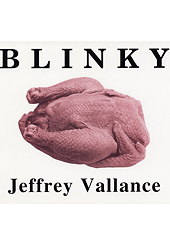Women
Ugley Women’s Institute
The Women's Institute, according to Wikipedia, is a "community-based organisation for women in the United Kingdom, Canada, South Africa and New Zealand." The first Women's Institute branch in the UK was established in 1915. And by the 1920s the village of Ugley in Essex had its own branch, making it the Ugley Women's Institute.The jokes began soon after. An Apr 13, 1945 column in the Saffron Walden Weekley News notes:
By the 1950s the members of the Ugley Women's Institute had apparently grown tired of the jokes. Newspapers reported a name change:

Evansville Press - Mar 24, 1956
However, I find that the same story then kept popping up throughout the late 1950s and 1960s, always reported as if it was breaking news, which makes me wonder if it was true in the first place. In the UK Register of Charities the organization is still listed as the Ugley Women's Institute.

Wisconsin State Journal - Sep 9, 1962
Incidentally, the village of Ugley also has an Ugley Farmers Market. And the town of Loose, in Kent, boasts the Loose Women's Institute.
Posted By: Alex - Wed Jun 21, 2023 -
Comments (2)
Category: Clubs, Fraternities and Other Self-selecting Organizations, Odd Names, Women
Questo/Touch Fabric from Allied Chemicals
I'd love to know exactly what this miracle fabric was made of, but can't find any description of it.The ad reminds me of the famous Monty Python skit where a man is executed by a running pack of topless women. See beyond the jump.
More in extended >>
Posted By: Paul - Tue May 09, 2023 -
Comments (3)
Category: Death, Fashion, Advertising, 1960s, Women
Vintage Trophy Girl Photos
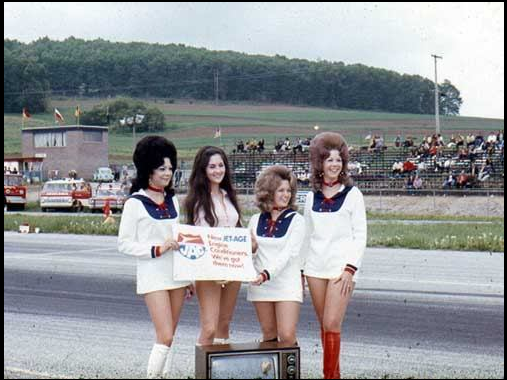
Hot rod/dragstrip racing has always featured beautiful women to hand out trophies or generally add allure to the scene. The folks at Jalopy Journal have assembled nearly 300 pages depicting same.
Posted By: Paul - Sun Apr 16, 2023 -
Comments (1)
Category: Beauty, Ugliness and Other Aesthetic Issues, Contest, Bohemians, Beatniks, Hippies and Slackers, Women, Cars
Le Clitoris
Le clitoris - Animated Documentary (2016) from Lori Malépart-Traversy on Vimeo.
Posted By: Paul - Sat Mar 25, 2023 -
Comments (0)
Category: Anthropomorphism, Body, PSA’s, Sexuality, Women, Twenty-first Century
Means of protection for feminine wear
Thanks to Natalie Teeple's invention, women riding public transportation in the 1910s had the means to give a sharply pointed response if "mashers" pressed up against them.It is the object of my invention to guard against undue familiarity of the character designated by the provision of means whereby the offender is automatically warned, punished, and deterred from persistent offense; and to this end my invention consists primarily of an elastic resilient spring arranged in conjunction with a spur or prick and adapted to be attached to an under-skirt in such manner that when subjected to extraneous pressure the sharp point will protrude;
Compare this with the "defense shoes" of the 1950s.

Posted By: Alex - Sun Feb 26, 2023 -
Comments (1)
Category: Patents, 1910s, Women
Live Alone And Like It
I posted two days ago about the 1937 book How To Live Without A Woman, which celebrated the bachelor lifestyle. But what about women who wanted to live without a man... or even without another woman? Marjorie Hillis's Live Alone And Like It (1936) was the book for them.Based on the review below, it seems that while Hillis offered some good advice for women living alone, she was less persuasive about them liking it:
You can read the book for free at archive.org.

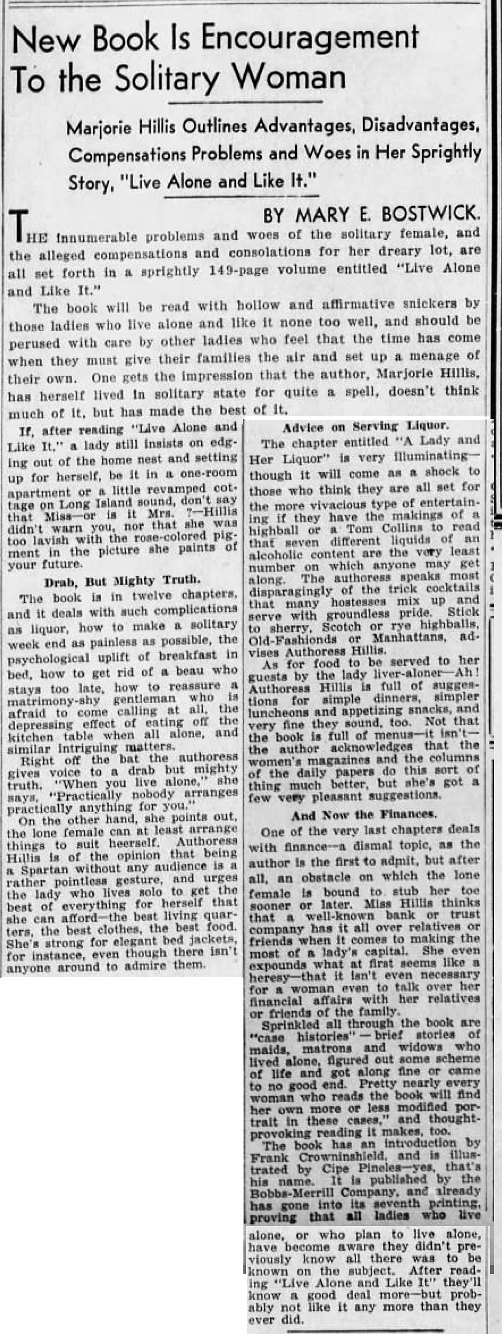
Indianapolis Star - Oct 4, 1936
Posted By: Alex - Thu Feb 02, 2023 -
Comments (4)
Category: Books, 1930s, Women
How to live without a woman
Alexander Wright's 1937 book, How To Live Without A Woman, was a celebration of bachelorhood. But it seems that Wright's strategy for life without a woman was to get his female friends to feel sorry for him and do his housework for him.Doesn't really seem like he was living without a woman if he was still getting women to do all his work. And you have to wonder how long he managed to keep any female friends before they figured out what was going on.
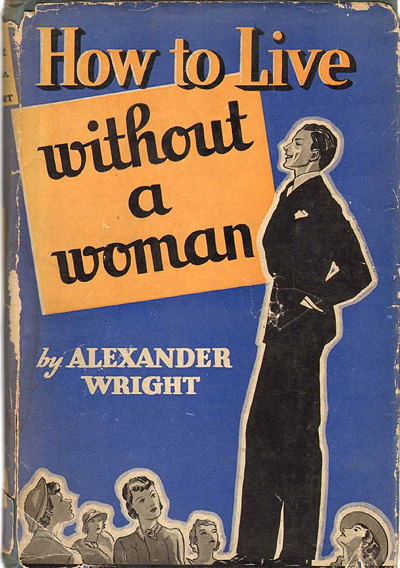
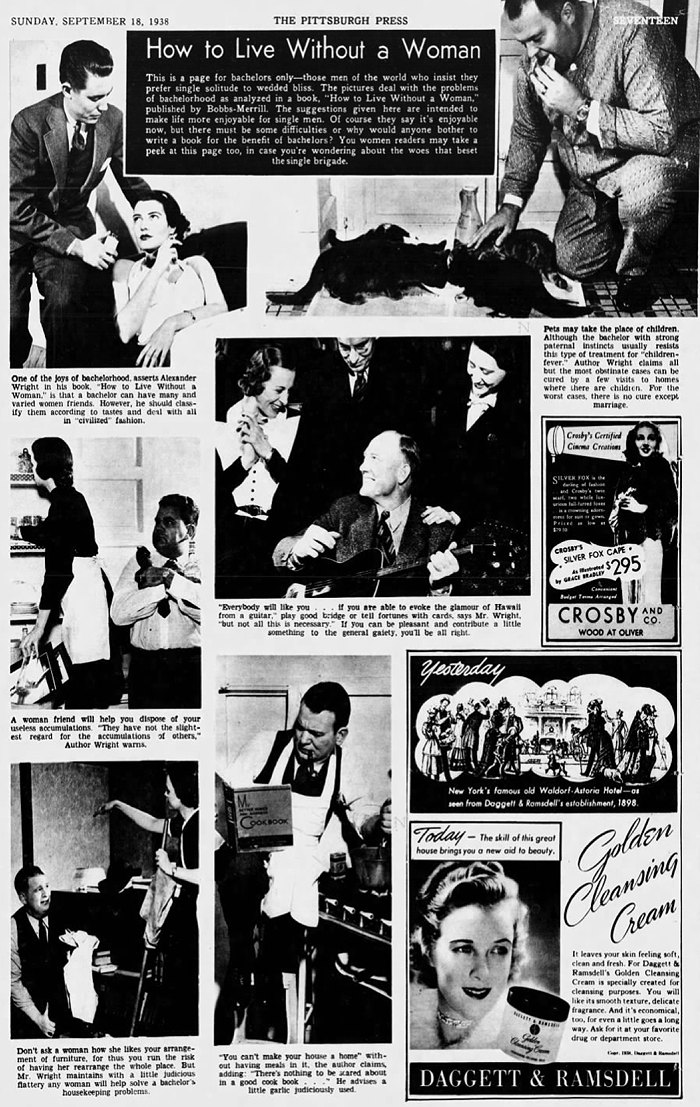
Pittsburgh Press - Sep 18, 1938
Posted By: Alex - Tue Jan 31, 2023 -
Comments (2)
Category: Gender, Men, Women, Books, 1930s
The Better Sex
Surely this could be rebooted for 2023 in our absolutely carefree and non-contentious cultural atmosphere.The Wikipedia page.
Posted By: Paul - Tue Jan 03, 2023 -
Comments (0)
Category: Games, Rivalries, Feuds and Grudges, Television, Men, Women
Follies of the Madmen #551
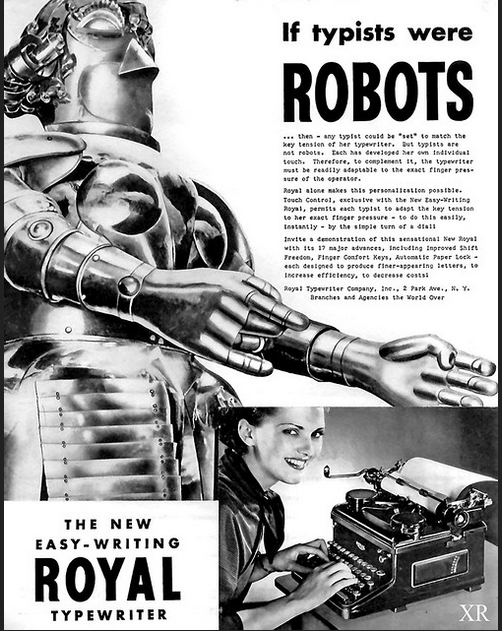
Posted By: Paul - Thu Dec 29, 2022 -
Comments (4)
Category: Business, Advertising, Robots, Women, Twentieth Century
Follies of the Madmen #546
Many more images in this campaign here.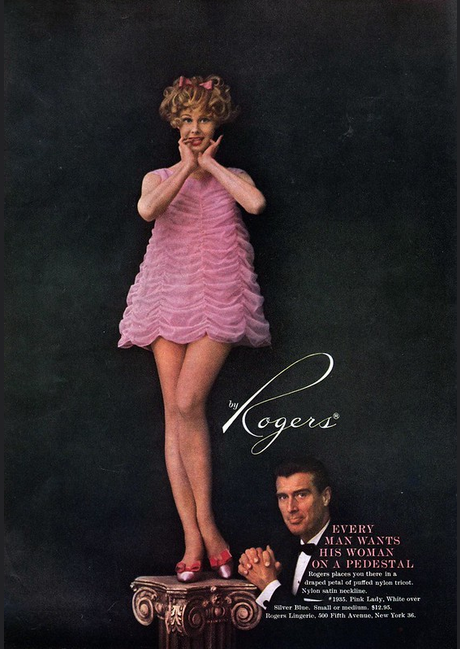
Posted By: Paul - Wed Nov 09, 2022 -
Comments (3)
Category: Stereotypes and Cliches, Advertising, Women, Twentieth Century

| Who We Are |
|---|
| Alex Boese Alex is the creator and curator of the Museum of Hoaxes. He's also the author of various weird, non-fiction, science-themed books such as Elephants on Acid and Psychedelic Apes. Paul Di Filippo Paul has been paid to put weird ideas into fictional form for over thirty years, in his career as a noted science fiction writer. He has recently begun blogging on many curious topics with three fellow writers at The Inferior 4+1. Contact Us |




